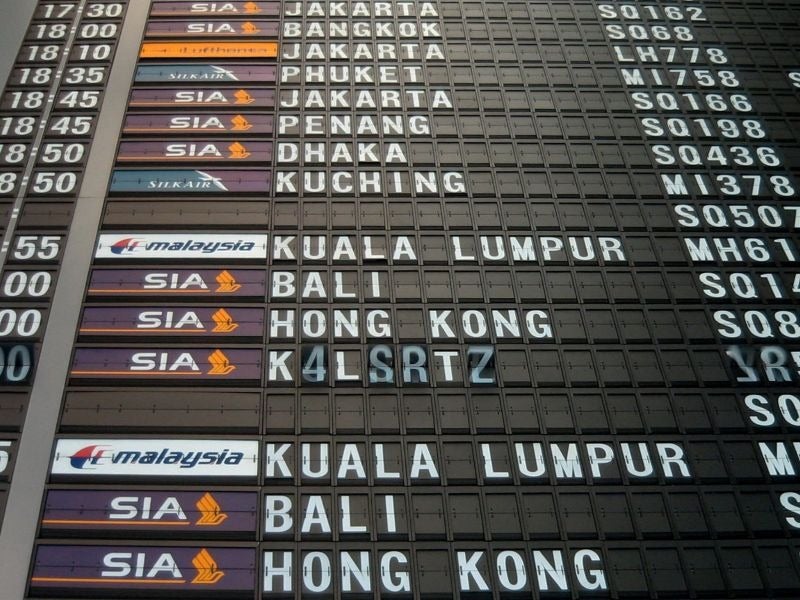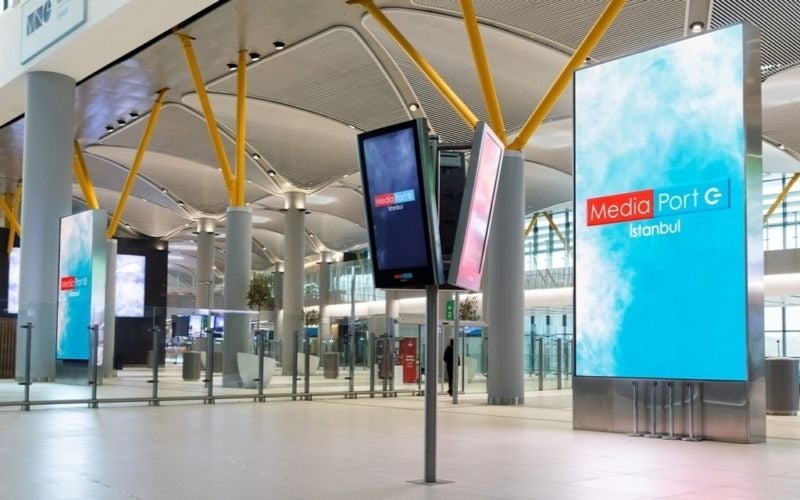
Innovative Approaches to Airport Wayfinding
In February this year, the iconic split-flat boards at Singapore Changi Airport’s Terminal 2 took their last flip after 21 years of service. Their touching removal, which elicited nostalgia from fans of vintage airport architecture worldwide, paved the way for the rollout of more efficient digital displays.
Although no longer in service in most of the world’s airports, these systems are a memorable symbol of the early days of airport signage, which has now largely embraced digitalisation in accordance to evolving passenger demands.
Over the past decade or so, airport wayfinding has faced similarly radical changes as a result of new technologies and changing expectations. From large billboard-style maps to mobile apps and the potential of facial recognition, here’s a round-up of how airport communications have evolved.
Static signage and the Schiphol standard
Before the advent of digital, an airport’s wayfinding strategy would entirely rely on static or printed signage in the form of banners, informational directories, advertising dioramas and split-flat boards, which became popular after the war.

“During the 1960s and through the mid-1970s, airport signing and graphic systems were designed to be predominantly permanent installations,” reads ‘Wayfinding and Signing Guidelines for Airport Terminals and Landside’, a 2011 report published by the US Airport Cooperative Research Programme. The design and structure of an airport’s signage strategy were largely influenced by the airlines serving it, thanks to which terms like ‘Boarding Area’ and ‘Baggage Claim’ were soon introduced.
How well do you really know your competitors?
Access the most comprehensive Company Profiles on the market, powered by GlobalData. Save hours of research. Gain competitive edge.

Thank you!
Your download email will arrive shortly
Not ready to buy yet? Download a free sample
We are confident about the unique quality of our Company Profiles. However, we want you to make the most beneficial decision for your business, so we offer a free sample that you can download by submitting the below form
By GlobalData“Additionally, airline permanency made the use of premium materials for sign systems more economically feasible,” says the paper. “These higher-end materials often had an ancillary benefit of reduced maintenance and repair costs over the life of the sign, which meant signs — and terminology — that were designed to last.”
In the following years, airlines’ growing influence in US aviation led to continual changes to sign systems, which in turn caused passenger confusion. To address the issue, the Airport Signing and Graphics Task Force was created in 1982.
Meanwhile in Europe, in 1967 the newly expanded Amsterdam Schiphol Airport employed interior architect Kho Liang le and graphic designer Benno Wissing to elaborate the first colour-coded sign system with a ‘passenger-first’ goal in mind. According to the Society for Experiential Graphic Design, this concept “stripped signs of any nonessential information and visually classified types of information by colour”.
This so-called “Schiphol standard” was later updated with new pictograms, a different font and more by designer Paul Mijksenaar. The Dutchman later collaborated with the Port Authority of New York and New Jersey and put together a ratified set of standards for aviation signage and wayfinding.
Over time these guidelines have helped to provide airports and their stakeholders with a general rulebook on best practices, while static and printed boards have evolved into high-quality, often large-scale banners with attention-grabbing colours and textures.
The digital era and app-based solutions
Airport wayfinding is much more diversified than it used to be. While static and printed signage still play a critical role when it comes to traditional advertising boards and route indication, it is also used as a back-up for airport communications in cases of IT glitches or similar emergencies.

Digital technologies are unlocking new creative opportunities. A prime example is the rise of flight information displays and baggage information displays, which have now almost totally replaced their analogic counterparts. These systems are not a novelty in the industry but tech giants such as LG Electronics, Samsung, NEC and Panasonic compete to offer the most tech-savvy solutions every year. Istanbul Airport currently owns the largest set of digital indoor LED signage in the world, a total of 700 Samsung Smart LCD and LED Signage covering an area of 1,012m2.
In the wayfinding sphere, advancements in geolocation technology are allowing airports to provide increasingly customised and targeted information through digital displays, kiosks and panels. These machines are now equipped with real-time data and interactive maps to help passengers navigate airports, locate the nearest bars and restaurants, find out about security queues and reach their gate.
In addition to these more traditional models, airports are now invested in providing app-based, mobile-friendly solutions. The range of offerings is overwhelming. Some apps help keep track of flights like Flight Radar or Flight Stats, as well as solutions for visually impaired travellers like San Diego’s Aira system or the NavCog app. British start-up Ocean 3D is also using digital twin technology to create virtual maps of airports and aircraft, while Miami International Airport’s MIA Airport Official app uses location-aware technologies and Bluetooth beacons to guide passengers through terminals.
Finally, airport guide robots are starting to make their way to the airport. Equipped with artificial intelligence and facial recognition capabilities, the machines are the new frontier of airport wayfinding. Among the first adopters are Incheon International Airport, which trialled them in 2017, and Panasonic, which is rolling them out at Japanese airports.
The future of wayfinding: personalised services and coronavirus
Robotics are likely to be implemented on a much broader scale in the years to come. This will be facilitated by the widespread adoption of facial recognition at airports, which are currently using it for security checks but may soon deploy it for many other segments.
Yet according to Delta Air Lines, new technologies can be used in many other ways to improve wayfinding. Earlier this year, the company announced plans to launch a Parallel Reality experience for passengers at Detroit Metropolitan Airport. The technology allows different passengers to simultaneously visualise tailored content about their journey from one screen. By scanning their boarding pass and selecting a language, travellers are provided with personalised wayfinding solutions.
The technology is a clear indication that in the coming years airports will strive to deliver even more customised services. When it comes to airport signage and wayfinding, this will also mean providing services in as many languages as possible. Earlier this year, New York’s John F. Kennedy Airport was a pioneer in this domain as it introduced a Google Assistant’s Interpreter Mode technology at its Terminal 4 to support customers in 29 different languages.
Prague Airport also recently explored this concept as it started trialling digital signage in six different languages. “[The technology] responds in six selected languages depending on the specific locations from where passengers have come or to where they are going at any given moment,” the airport said in a press release. “This means that during the day, active language versions change depending on the composition of the passenger flow.”
The ongoing coronavirus pandemic is also likely to create radical changes throughout the aviation industry, which will have to rethink its operations, cleaning strategies and use of space in the future months.
In terms of wayfinding, the outbreak is already making an impact. Airports around the world have now introduced both static and digital signage to direct passengers towards areas for testing or provide personal hygiene tips. This type of information will remain crucial even when things go back to normal, so we should expect more investment in health-related signage in the future.



